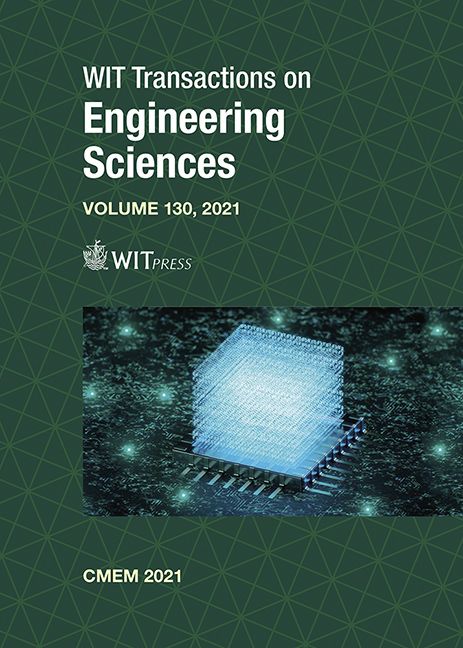DESIGN FOR ADDITIVE MANUFACTURING: IS IT AN EFFECTIVE ALTERNATIVE? PART 1 – MATERIAL CHARACTERIZATION AND GEOMETRICAL OPTIMIZATION
Price
Free (open access)
Transaction
Volume
130
Pages
11
Page Range
87 - 97
Published
2021
Paper DOI
10.2495/CMEM210081
Copyright
Author(s)
FRANCO CONCLI, MARGHERITA MOLINARO, ELEONORA RAMPAZZO
Abstract
Additive Manufacturing (AM) is becoming a more and more widespread (and trendy) approach. Its flexibility and capability to manufacture any topology has opened new possibilities: AM could lead to significant performance improvements thanks to the exploitation of lattice or reticular structures as partial replacement of the traditional solid design. The potential of this technology knows no bounds. However, in the real world, the lower performances of the materials and the high manufacturing costs significantly restrict the fields of application for which the adoption of AM results effective. In this context, the mechanical static and fatigue properties of a 17-4 PH Stainless Steel produced via AM were experimentally measured and compared with those of the wrought material to quantify the performance reduction. Based on these data, three components, namely a hip prosthesis, a blow plastic bottle die, and an automotive gear were selected as representative examples to show the pros and contra of AM. The three components were chosen because they belong to three quite dissimilar fields and are produced in different batch sizes. The three original designs were specifically optimized for AM by means of Finite Element (FE) Simulations. The new solutions fulfil the strength requirements of the original parts showing at the same time reduced weights and inertias. The traditional and new designs were compared in terms of production times and costs to quantify the real benefits of AM for different applications.
Keywords
additive manufacturing, FEM, optimization





